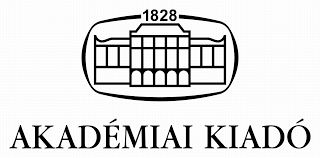Location
Akadémiai Kiadó, founded in 1828 by the Hungarian Academy of Sciences, is Hungary’s oldest continuously operating publishing house. Our mission is to promote Hungarian and international science, that is, to publish the new discoveries in various areas of science, to effectively support information exchange amongst scientists on a global level, and to make scientific results a public property available for all who seek valuable and reliable knowledge.
Our traditions oblige us. Our aim is to become the most significant scientific publishing house of Central and Eastern-Europe whilst maintaining excellent quality, further improving our important scientific and business partnerships, creating scientific, economic and social values and keeping ahead the revolution in communication technology that is reshaping the publishing industry.
Akadémiai Kiadó publishes more than 50 peer-reviewed international journals which represent a score of scientific fields. Most of our journals are indexed in Scopus, and many of them are indexed in the Science Citation Index or in the most important field-specific databases, i.e. Medline/Pubmed, Chemical Abstracts, Biological Abstracts, BIOSIS Previews, etc. The overall citation of our journals has increased annually since 2005.
Co-operating with market-leading subcontractors from all over the world we offer an advanced and excellent on-line service for our authors and readers worldwide.
Members:
Resources
Displaying 1 - 5 of 17Traits in Lepidoptera assemblages are differently influenced by local and landscape scale factors in farmland habitat islands
Semi-natural grassland islands have a key role in slowing down biodiversity decline in intensively cultivated agricultural landscapes. Assemblages in such habitat patches are not only limited by local habitat quality, but are also influenced by the suitability and distribution of different habitat types in the surrounding landscape. If we want to preserve a functionally diverse Lepidoptera fauna, both local and landscape scale environmental effects, including land use and management, should be considered.
Species sorting drives variation of boreal lake and river macrophyte communities
Metacommunity paradigms are increasingly studied to explain how environmental control and spatial patterns determine variation in community composition. However, the relative importance of these patterns on biological assemblages among different habitats is not well known. We investigated the relative roles of local, catchment and spatial variables based on overland and watercourse distances in explaining the variation of community structure of lake and river macrophytes in two large river basins at two spatial extents (within and across river basins).
Effects of land abandonment on bird communities of smallholder farming landscapes in post-war Croatia: implications for conservation policies
Land abandonment is a widespread phenomenon in agricultural systems, especially in former communist countries of Eastern and South-eastern Europe. Moreover, Croatia was affected by acts of war which enhanced the depopulation of marginal areas impelling further land abandonment. Agricultural landscapes in Croatia are highly parcelled with various proportions of forest habitats due to traditional smallholder farming systems. Secondary successions as a consequence of land abandonment affect farmland birds that are among the most endangered bird species in Europe.
Woodland bird response to landscape connectivity in an agriculture-dominated landscape: a functional community approach
Over the last 30 years, ecological networks have been deployed to reduce global biodiversity loss by enhancing landscape connectivity. Bird species dwelling in woodland habitats that are embedded in agriculture-dominated landscapes are expected to be particularly sensitive to the loss of connectivity. This study aimed to determine the role of landscape connectivity in woodland bird species richness, abundance, and community similarity in north-east Brittany (north-west France).
Detection of long-term landscape changes and trajectories in a Pannonian sand region: comparing land-cover and habitat-based approaches at two spatial scales
A key driver of biodiversity loss is human landscape transformation. Change detection and trajectory analysis are frequently applied methods for studying landscape change. We studied to what degree habitat-specific change detection and trajectory analysis provide different information on landscape change compared to the analysis with land-cover statistics. Our research was carried out at two spatial scales (regional, 1800 km2, 360 random points; local, 23 km2, polygon-based maps) in the Kiskunság, Hungary.


